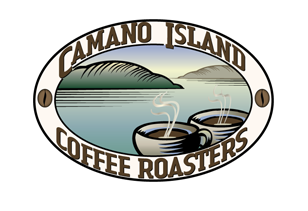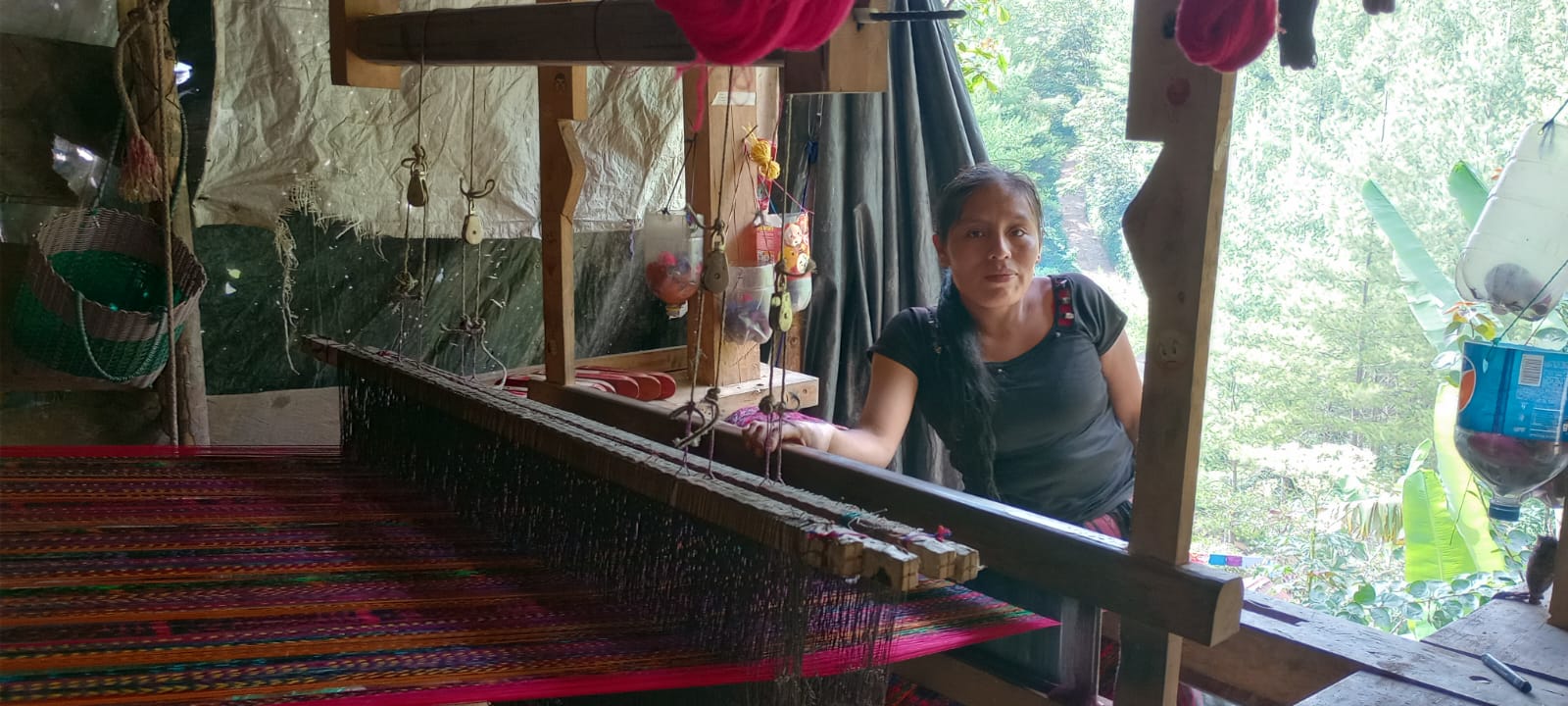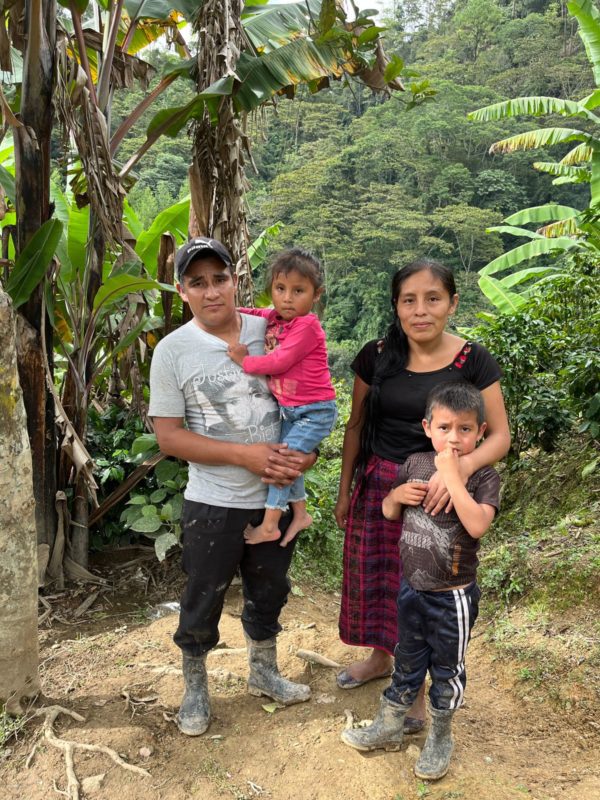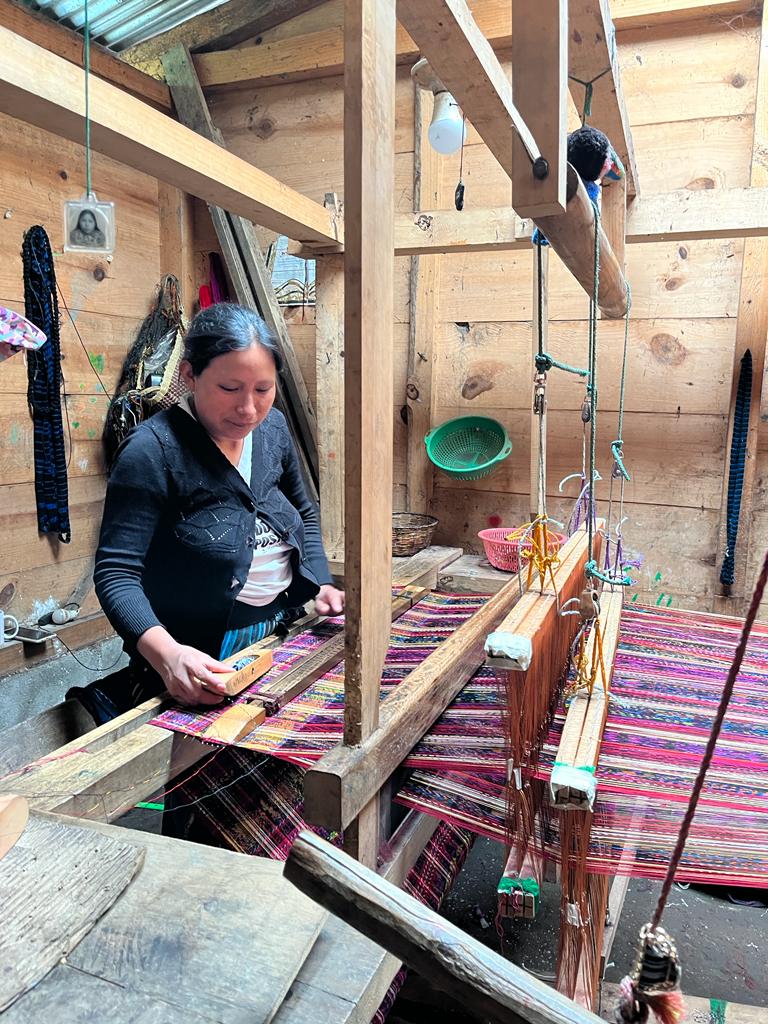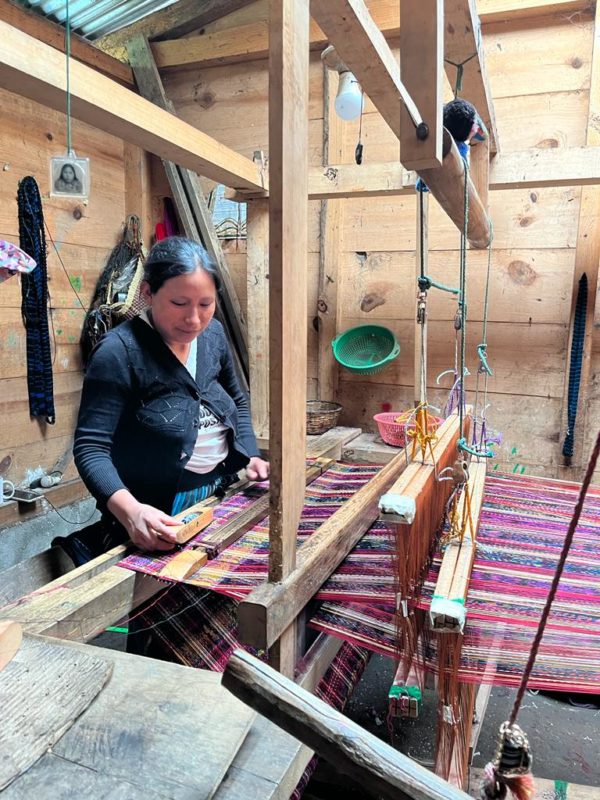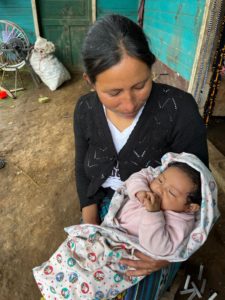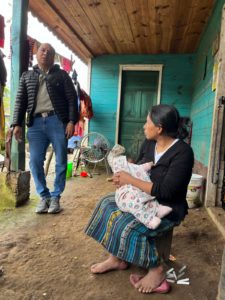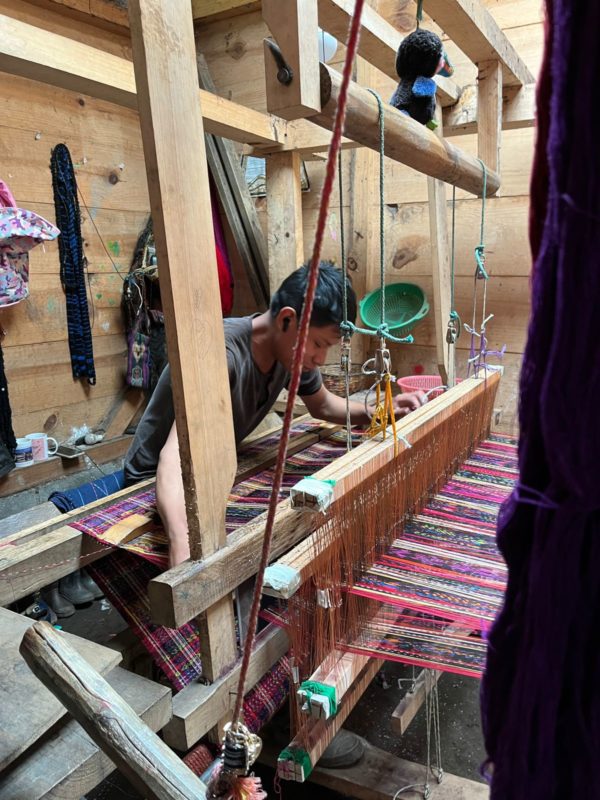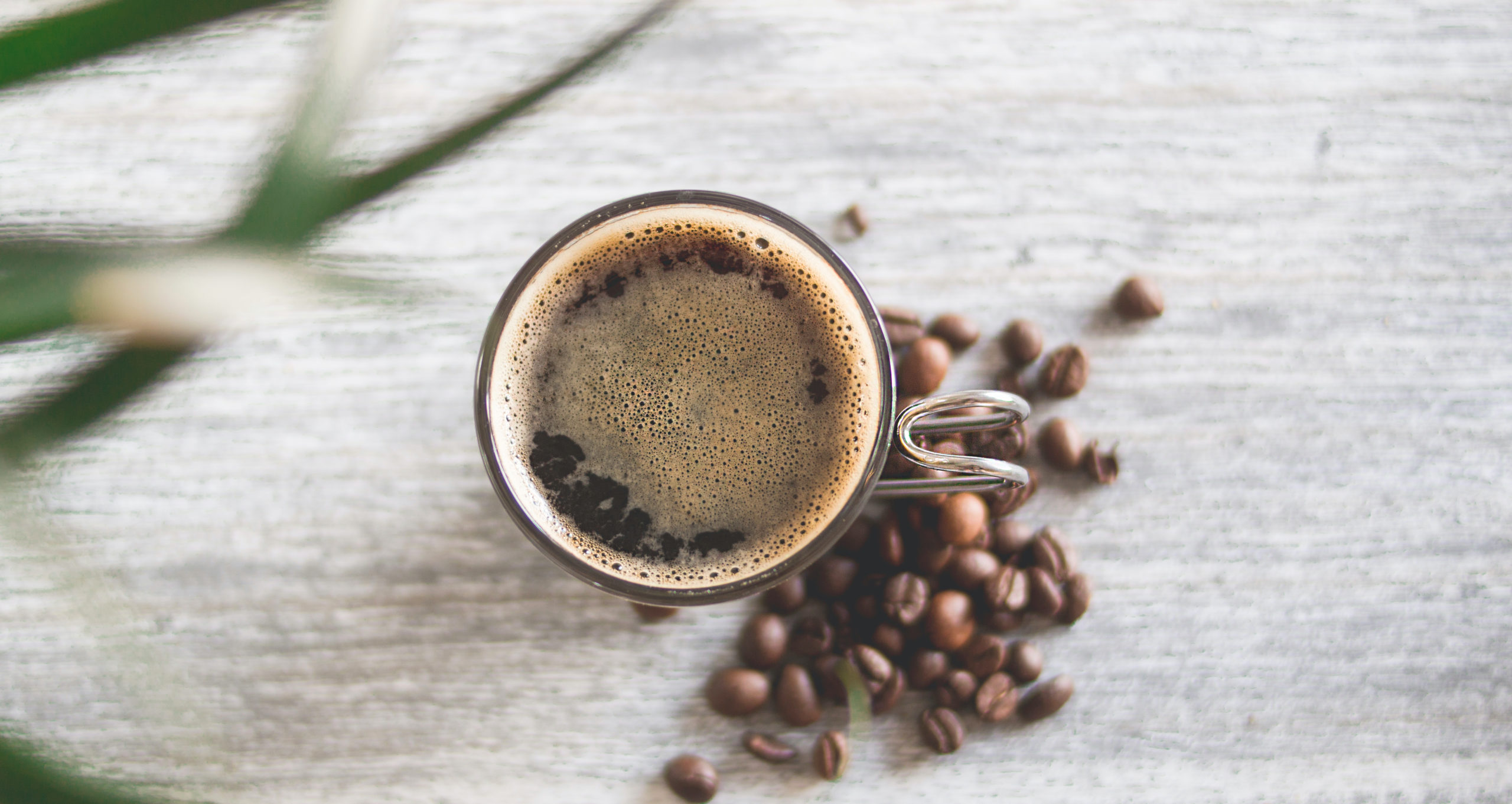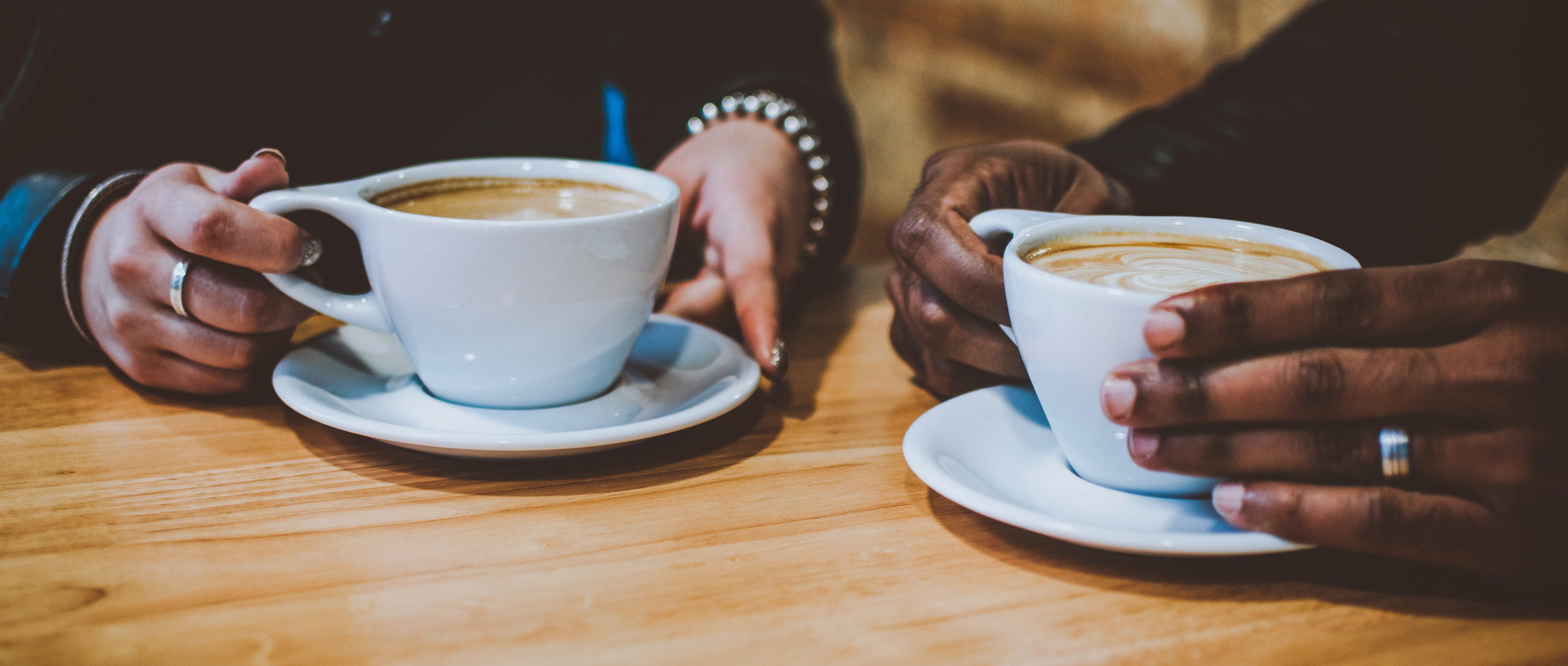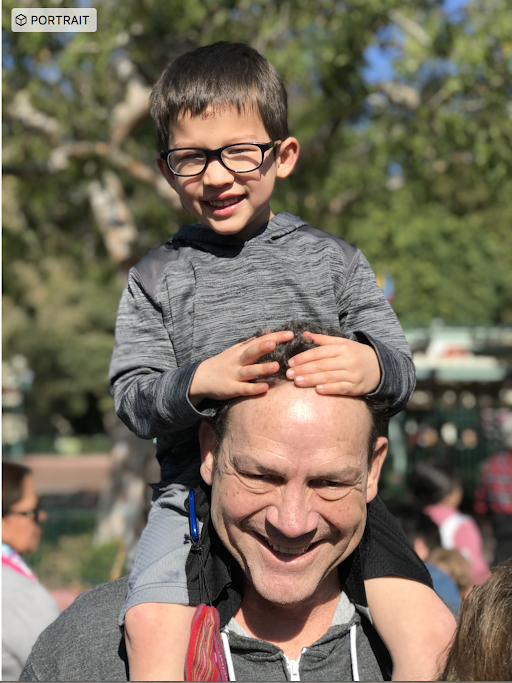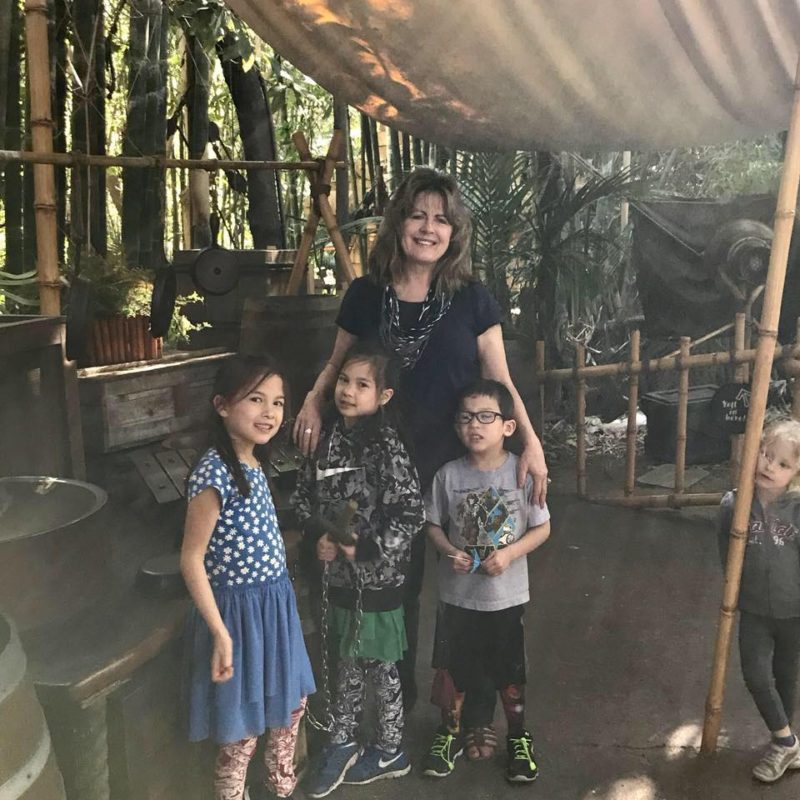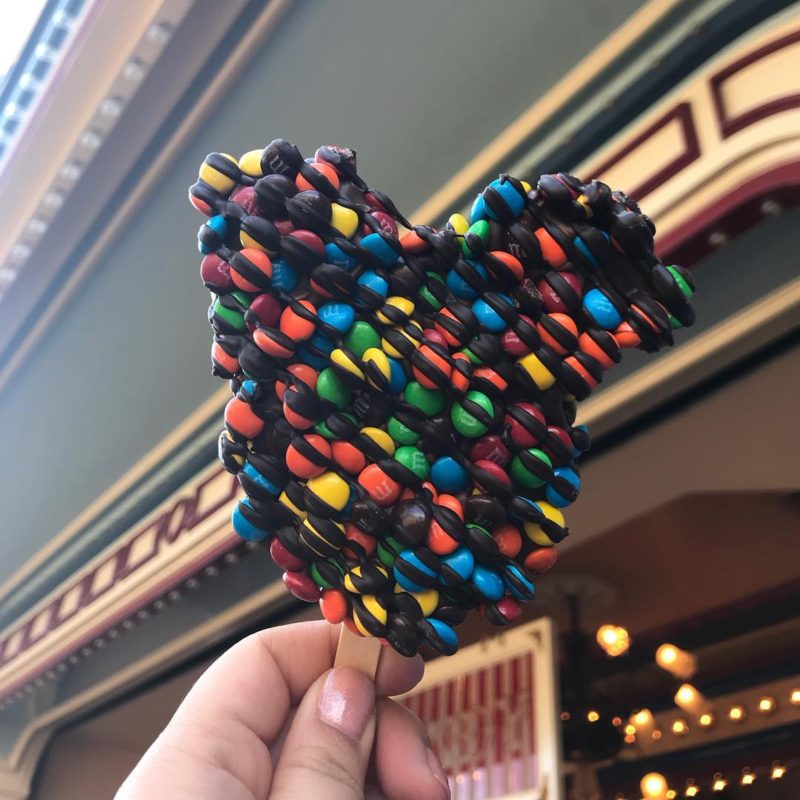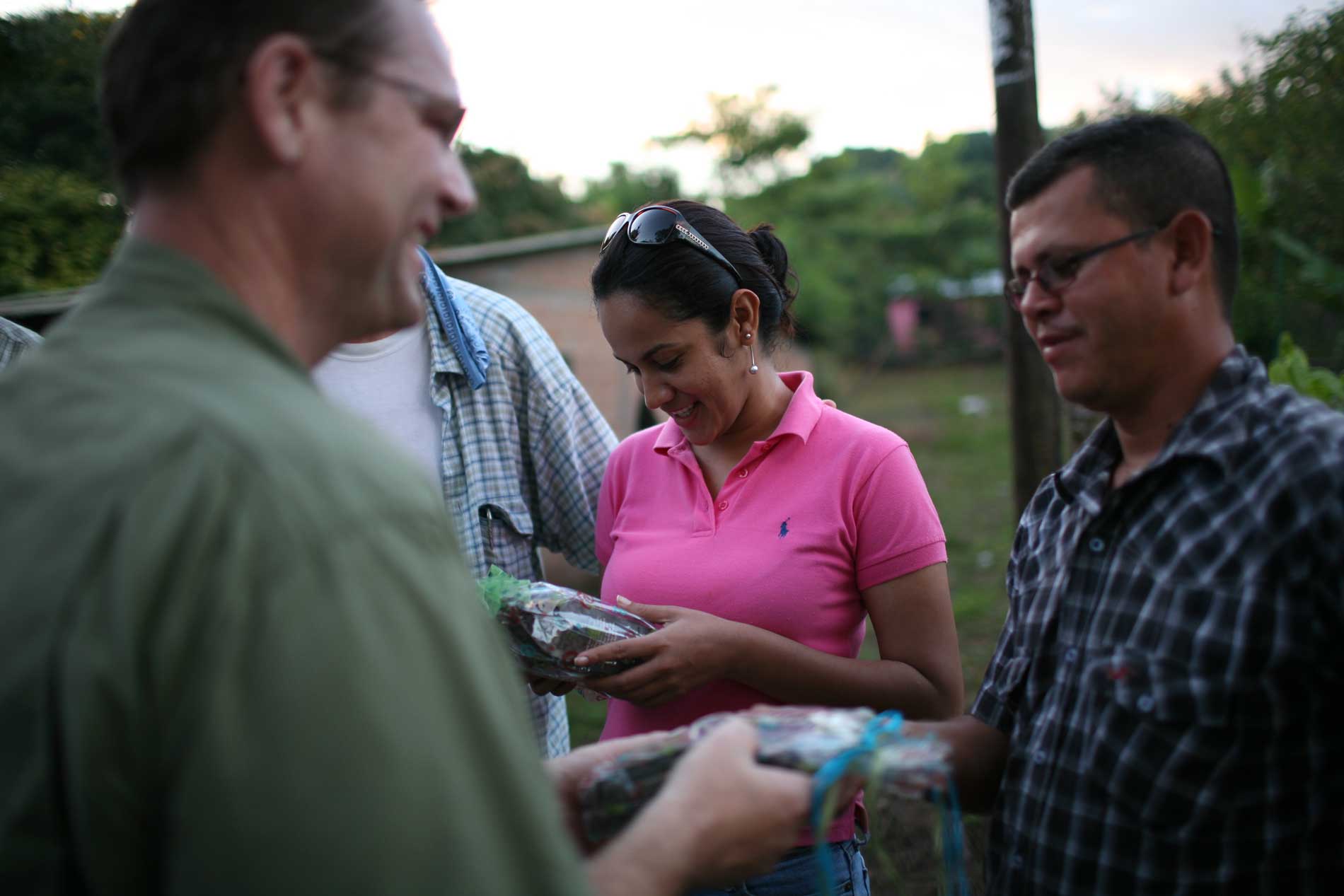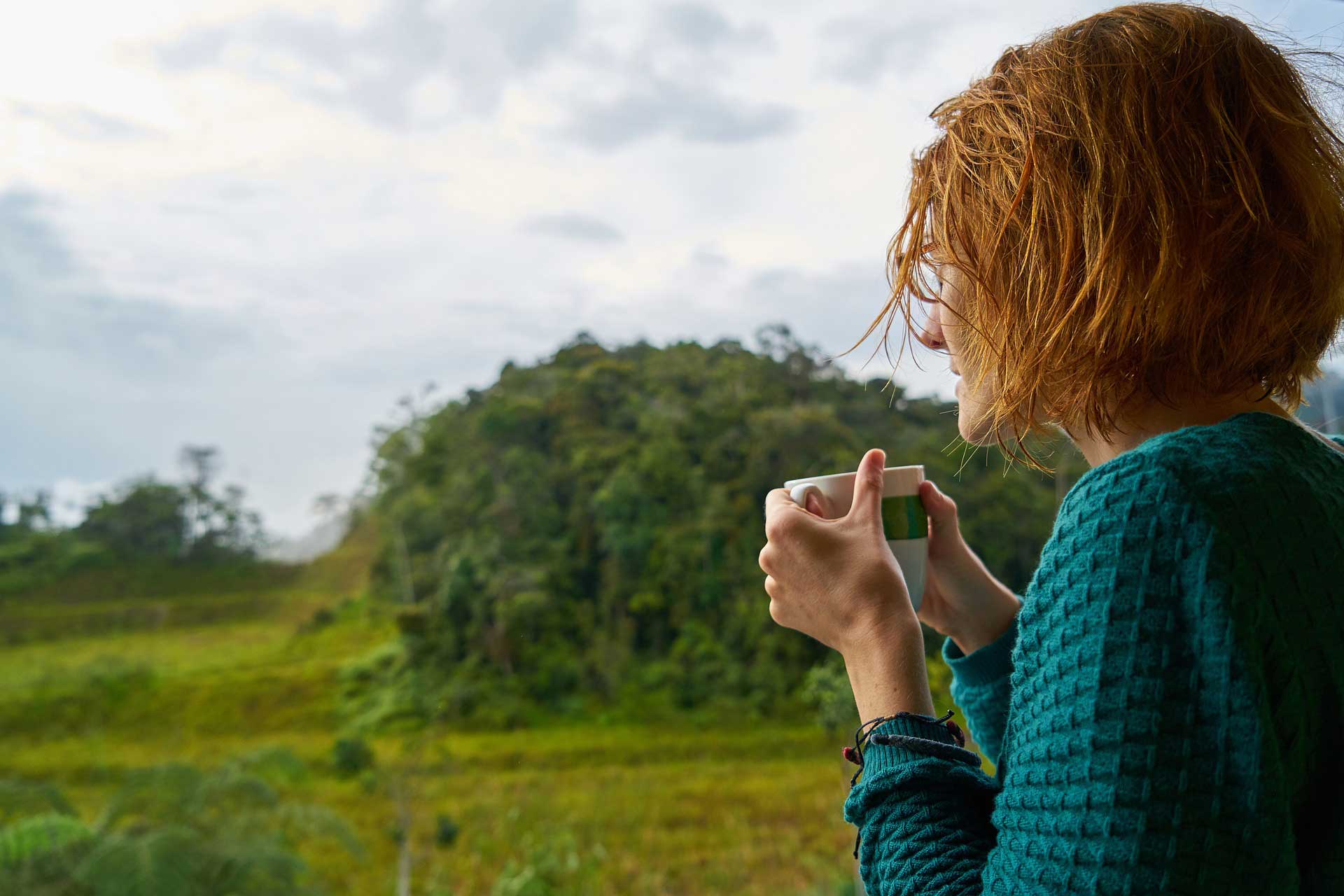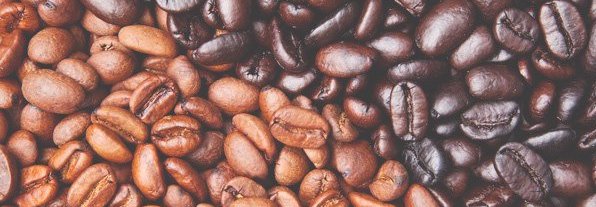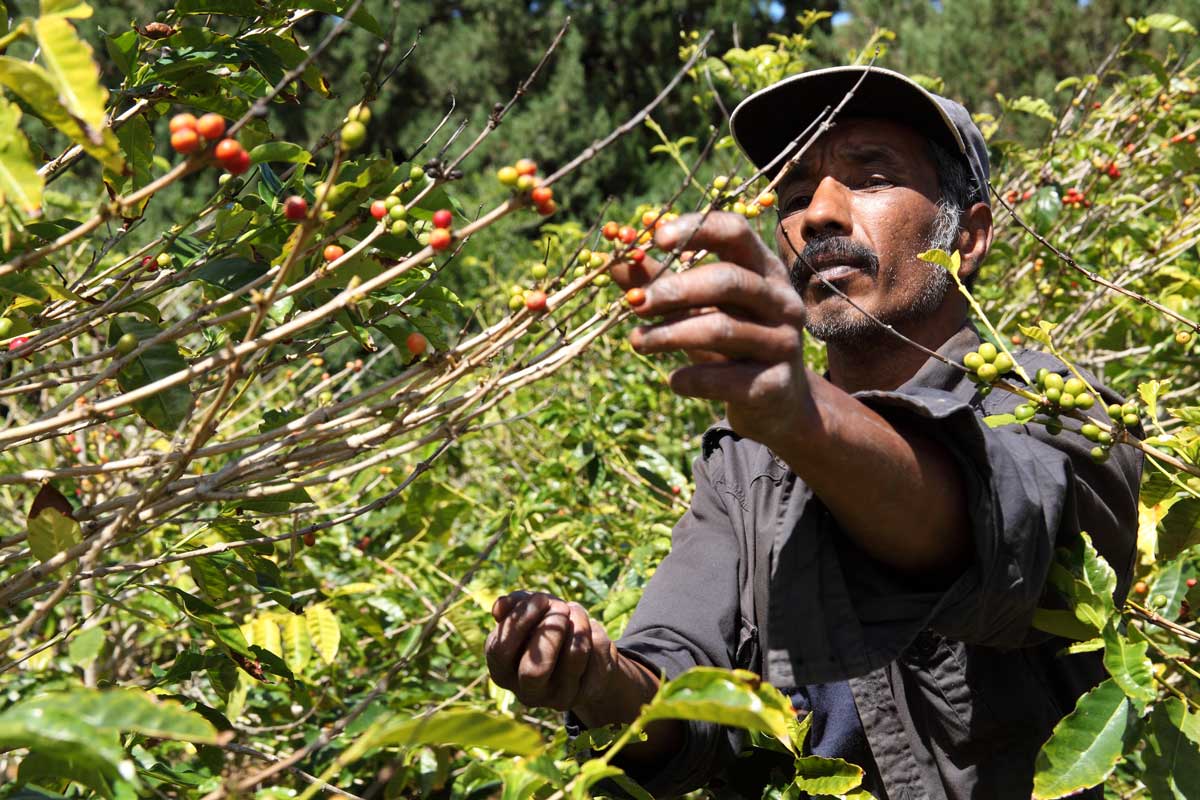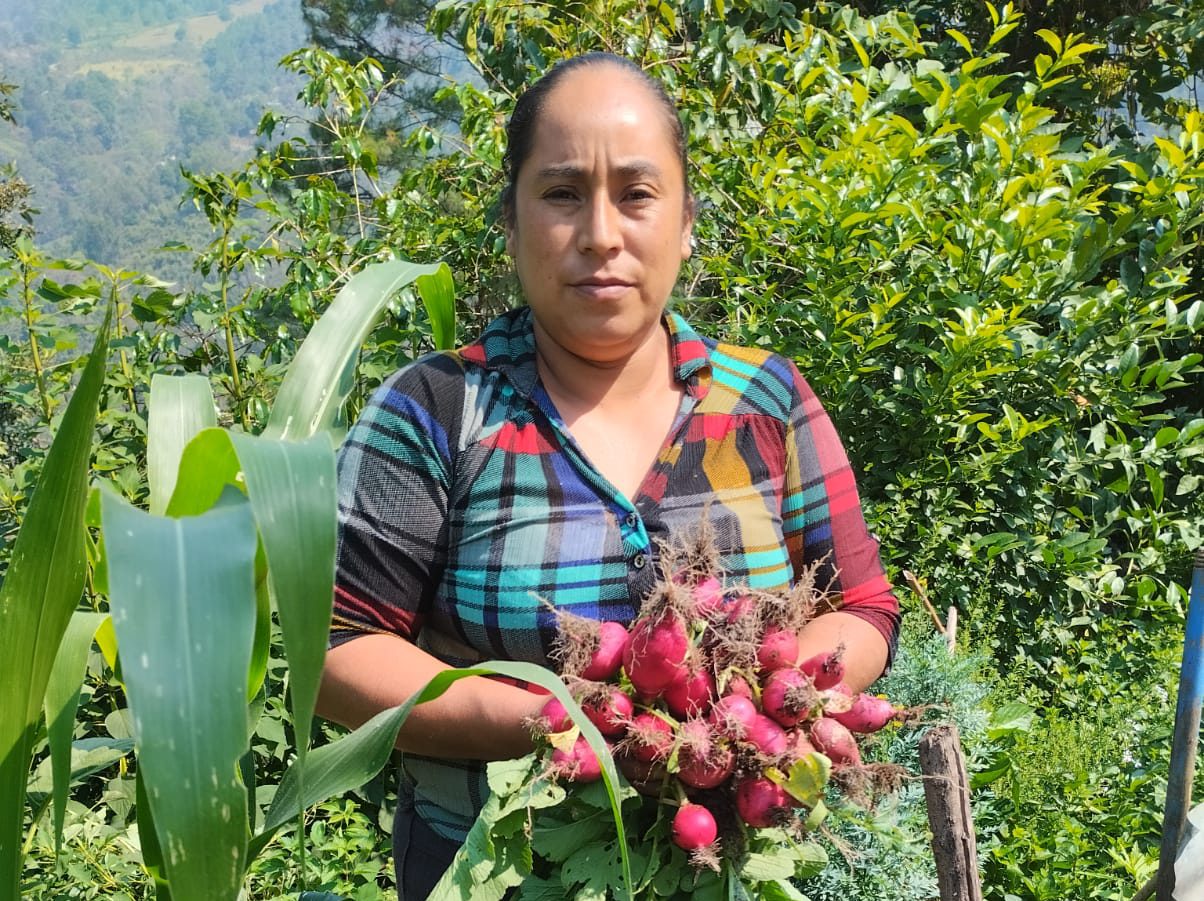
Enoemia’s Story
Enoemia Mazariegos is a member of the cooperative ACODIHUE, in Huehuetenango, Guatemala. She lives in the community of Villa Linda in her parents’ house with her two sons. Being a single mom, Enoemia has had a difficult time getting ahead in life and providing for her two children — Alfonso and Keybar.. “A single mother carries a stigma in this society, limiting their opportunities.”
Through contact with Food 4 Farmers Enoemia gained a new opportunity. She was offered a position to help as a Food Security Coordinator. About being offered the position Enomeia said “I had a lot of doubts. I didn’t know if I could do it because I only went to primary school. The women in my community knew me, but I didn’t know how to teach them or if they were going to support me in this project. It also represented a lot of time from my part -sometimes I walk for hours to reach the families- and I didn’t know if the effort was going to be beneficial to me.” She continues, “In all honesty, I accepted because there was a small economic incentive, and I was in a lot of need. But as I started my training, I realized that I really like working with women and learning about producing our own food.
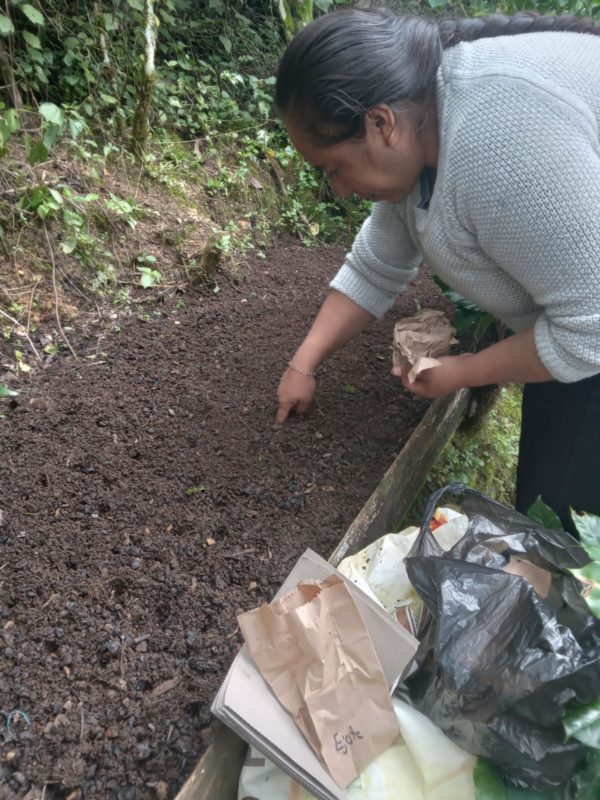
I can’t remember the time in my community when we produced our own food. I think that is very interesting. Also, I feel that this project has made me confront my fears and show me how to be more responsible for my community.”
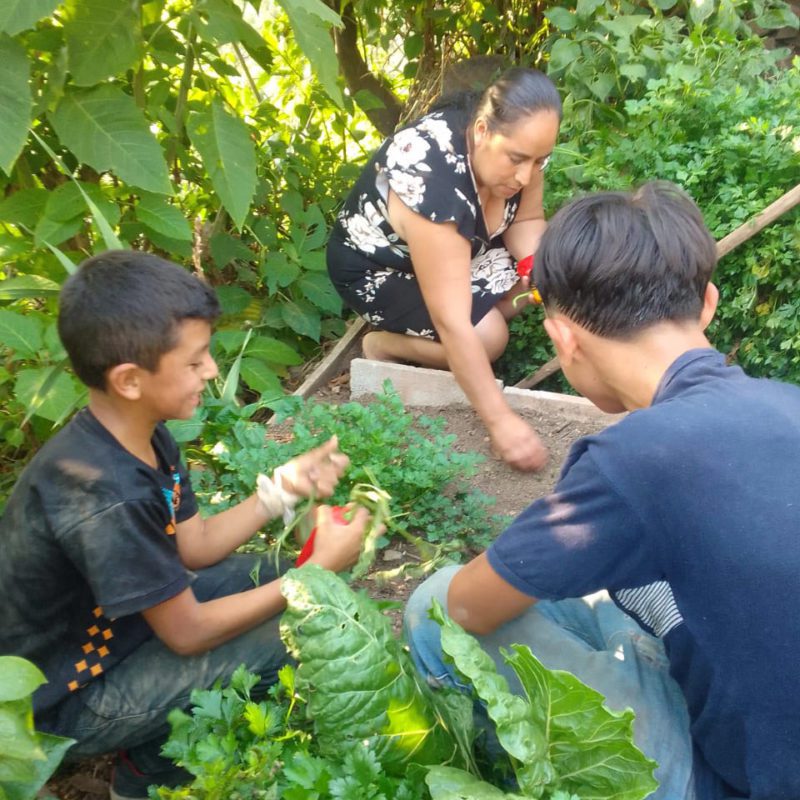
Before becoming a Food Security Coordinator for Food 4 Farmers Enoemia’s only job opportunity was working in the family coffee plot. Because of this, she was considering taking her 13 year old son (now 14) out of school because they didn’t have the resources to keep him in school. Enoemia was disheartened about this because she couldn’t finish school herself and was hoping to provide better opportunities for her children. But thanks to the promoter’s compensation she receives, she is not afraid of that anymore.
The Food Security Coordinator position also made her eligible for affordable housing through a housing program with ACODIHUE co-op and is in the process of finishing her new home where she will finally achieve her dream of being independent with her two sons.
Finally, when asked how her diet has changed since the food security program started, “a lot!” she replied. “Now my children are eager to go to our home garden to see what is ready to eat, and there is a lot that we didn’t consume before because we were not used to, like lettuce, radishes, herbs, carrots and beets.” She continues, “now we can’t live without our organic garden. Also, through Food 4 Farmers trainings I have learned to cooked in different ways so my sons can have healthy meals.”
Then she adds in her own words “Maybe the most important thing I learned is that I can, I am able, and I will get ahead with my children.”
